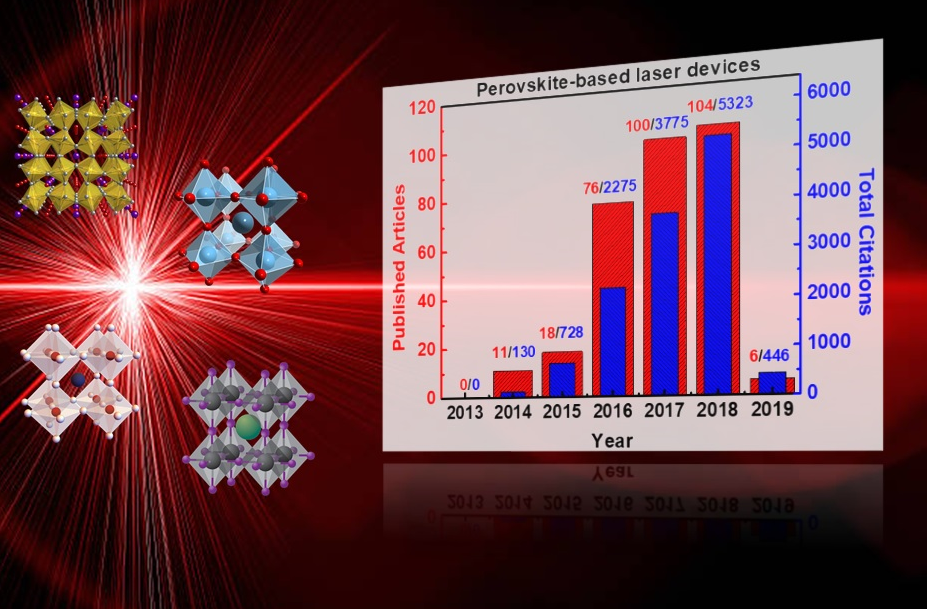Preprint
Review
Inorganic and Hybrid Perovskite Based Laser Devices : A Review
Altmetrics
Downloads
762
Views
948
Comments
0
A peer-reviewed article of this preprint also exists.
Submitted:
20 January 2019
Posted:
22 January 2019
You are already at the latest version
Alerts
Abstract
Inorganic and organic – inorganic (hybrid) perovskite semiconductor materials have attracted the worldwide scientific attention and research effort as the new wonder material in optoelectronics. Their excellent physical and electronic properties have been exploited to boost the solar cells efficiency beyond 23% and captivate their potential as competitors to the dominant silicon solar cells technology. However, the fundamental principles in Physics dictate that an excellent material for photovoltaic applications must be also an excellent light emitter. This has been realized for the case of perovskite based light emitting diodes (LEDs) but much less for the case of the respective laser devices. Here, the strides have been made since 2014 are presented for the first time. The solution processability, low temperature crystallization, formation of nearly defect free, nanostructures, the long range ambipolar transport, the direct energy band gap, the high spectral emission tunability over the entire visible spectrum and the almost 100% external luminescence efficiency show perovskite semiconductors’ potential to transform the nanophotonics sector. The operational principles, the various adopted material and laser configurations along the future challenges are reviewed and presented in this paper.

Keywords:
Subject: Physical Sciences - Optics and Photonics
Copyright: This open access article is published under a Creative Commons CC BY 4.0 license, which permit the free download, distribution, and reuse, provided that the author and preprint are cited in any reuse.
MDPI Initiatives
Important Links
© 2024 MDPI (Basel, Switzerland) unless otherwise stated







